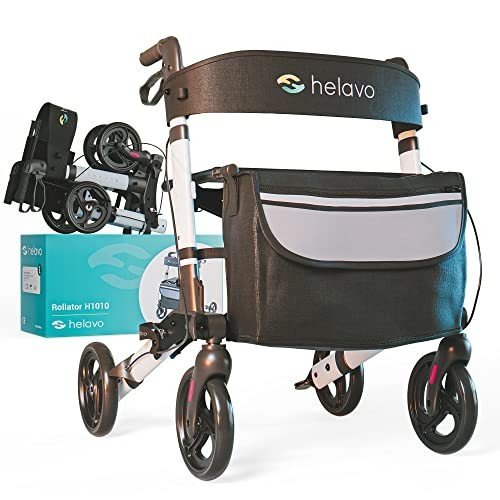The 10 Most Terrifying Things About Medical Walker
페이지 정보
작성자 Terri 댓글 0건 조회 8회 작성일 25-07-06 19:31본문
Understanding Medical Walkers: A Comprehensive Guide
Medical walkers act as invaluable mobility aids for individuals recovering from surgery, managing persistent illnesses, or handling age-related mobility issues. These gadgets not just boost physical independence but also improve safety, enabling users to navigate their environments with higher ease. This short article explores the types, benefits, functions, and considerations related to medical walkers, in addition to some often asked questions.
Tabulation
- Kinds Of Medical Walkers
- Benefits of Using a Medical Walker
- Key Features to Consider
- Regularly Asked Questions
- Conclusion
1. Types of Medical Walkers
Medical walkers are offered in various designs, catering to various needs and preferences. The primary types consist of:
| Type of Walker | Description |
|---|---|
| Standard Walker | A rectangle-shaped frame with 4 legs, offering stability and support. |
| Two-Wheeled Walker | Similar to a basic walker however geared up with wheels at the front for much easier movement. |
| Three-Wheeled Walker | A lightweight walker with three wheels, enabling more maneuverability, suitable for indoor use. |
| Rollator Walker | A walker with 4 wheels, hand brakes, and a seat, ideal for longer ranges and resting needs. |
| Hemi Walker | Designed for people who can use only one hand, featuring a tripod-like design. |
2. Benefits of Using a Medical Walker
Utilizing a medical walker provides numerous benefits that contribute to the user's total wellness, consisting of:

- Increased Stability: Walkers supply a stable base of assistance, reducing the threat of falls.
- Improved Mobility: They enable users to move more easily, promoting self-reliance.
- Pain Relief: By rearranging weight, walkers can reduce discomfort in the joints, especially in the hips and knees.
- Posture Support: These gadgets motivate proper posture, lowering strain on the back.
- Improved Confidence: Users typically feel more safe using walkers, leading to much better self-confidence and increased activity levels.
3. Secret Features to Consider
When selecting a medical walker, it's important to examine various functions to discover the ideal fit. Here are some important aspects to consider:

- Weight Capacity: Ensure the walker can support the user's weight while maintaining stability.
- Height Adjustment: Look for a walker with adjustable height settings to accommodate the user's height and provide comfy grip.
- Material: Lightweight aluminum walkers are easier to maneuver, while steel walkers use more powerful support but might be much heavier.
- Wheel Quality: If choosing a wheeled walker, consider the wheel size and tread. Bigger wheels browse irregular surface areas more quickly.
- Seat Availability: If users will be walking for longer periods, a walker with an integrated seat can offer rest breaks when required.
- Brakes: Hand brakes are specifically crucial for safety in rollator walkers to manage speed and stop when required.
Kinds of Walkers with Features Comparison Table
| Walker Type | Weight Capacity | Height Adjustment | Wheels | Seat Available | Brakes |
|---|---|---|---|---|---|
| Requirement Walker | Up to 300 pounds | Yes | No | No | No |
| Two-Wheeled Walker | As much as 300 pounds | Yes | Yes | No | No |
| Three-Wheeled Walker | Approximately 250 pounds | Yes | Yes | No | No |
| Rollator Walker | Approximately 400 pounds | Yes | Yes | Yes | Yes |
| Hemi Walker | As much as 250 pounds | Yes | No | No | No |
4. Often Asked Questions
Q1: Who ought to use a medical walker?A: Medical walkers are helpful for individuals recuperating from surgical treatment, experiencing balance concerns, or requiring support due to age-related mobility challenges. Q2: Can a medical walker be adjusted?A: Yes, most
medical walkers are height-adjustable to accommodate various user heights, enabling for a more comfortable grip. Q3: How do I pick the best walker for my needs?A: Consider elements such as the
user's weight, height, kind of mobility problems, and whether they need a seat or brakes. Checking the walker for comfort and stability before purchase is also advisable. Q4: Are there any safety pointers related to utilizing a medical walker?A: Yes, users should ensure they don't lean too
greatly on the walker, use it on steady and level surfaces, and always make sure
the brakes are engaged when seated or fixed. Q5: Can walking with a Medical Walker (Main Page) assist with rehabilitation?A: Absolutely. Medical walkers are frequently advised as part of rehab programs as they encourage
physical activity, which aids in healing and mobility improvement. 5.
Conclusion Medical walkers play a crucial function in improving the quality of life for individuals facing mobility difficulties. With different types and functions offered, picking the best walker involves considering the user's specific requirements and circumstances. By comprehending their benefits and appropriate use, people can restore independence, improve their mobility, and navigate their surroundings securely. Whether for short-term recovery or long-lasting support, the right medical walker can considerably improve a user's total well-being. Including a medical walker into one's everyday regimen can be a transformative choice, making it easier to get involved in life's day-to-day activities while guaranteeing safety and confidence.
댓글목록
등록된 댓글이 없습니다.

